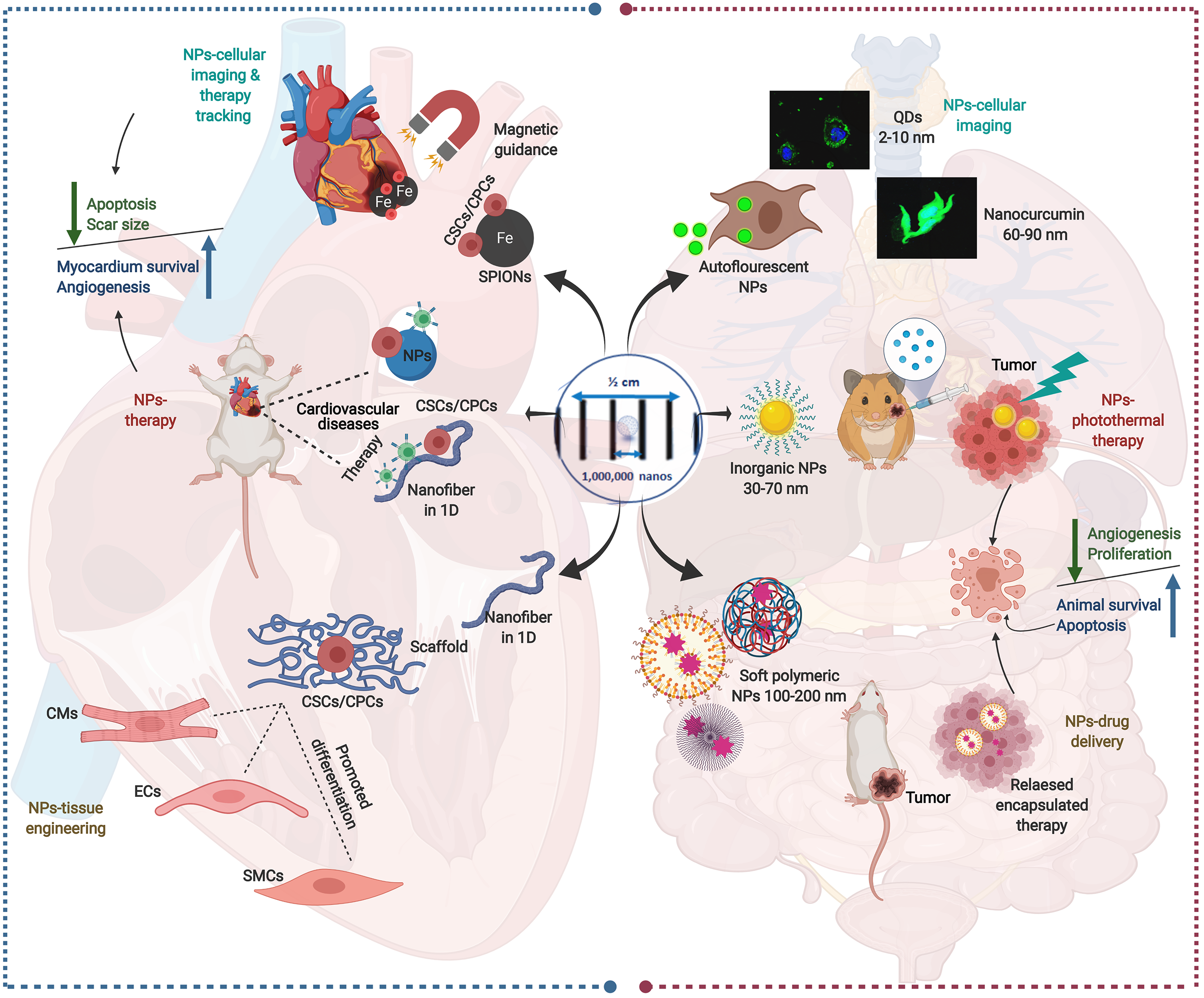Copyright
©The Author(s) 2022.
World J Stem Cells. Jan 26, 2022; 14(1): 1-40
Published online Jan 26, 2022. doi: 10.4252/wjsc.v14.i1.1
Published online Jan 26, 2022. doi: 10.4252/wjsc.v14.i1.1
Figure 5 Schematic presentation of multiple nanoparticles-based paradigms in nanomedicine (right side) and their mirror images in nanoparticle-assisted cardiac stem cell interventions (left side).
In the right side, the auto-luminescence of quantum dots and some polymeric natural nanoparticles (NPs) as nanocurcumin qualifies them to be used primarily in tracking and diagnostic imaging. Meanwhile, inorganic NPs have been extensively investigated in cancer treatment as photothermal therapy due to the plasmonic resonance of their outer electron. For drug delivery purposes, soft NPs, such as liposomes, polymicelles, and dendrimers, are used due to their flexibility and biophysical interaction with components of the cell membrane, which enable them to penetrate biological membranes. In the left side, the impact of different NPs on cardiac stem cell (CSC)-based therapy are shown. The superparamagnetic iron oxide NPs are used for tracking and imaging of the CSCs-therapy, while nanofibers are used either as a dual delivery system for CSCs and therapy. Moreover, nanofiber scaffold holding the CSCs is used in tissue engineering to assist CSCs’ differentiation. The confocal images of NPs-cellular imaging are reproduced with permission[196]. Created with BioRender.com. NPs: Nanoparticles; SMCs: Smooth muscle cells; CMs: Cardiomyocytes; ECs: Endocardial cells; CSCs: Cardiac stem cells; CPCs: Cardiac progenitor cells; SPION: Superparamagnetic iron oxide NP.
- Citation: Mehanna RA, Essawy MM, Barkat MA, Awaad AK, Thabet EH, Hamed HA, Elkafrawy H, Khalil NA, Sallam A, Kholief MA, Ibrahim SS, Mourad GM. Cardiac stem cells: Current knowledge and future prospects. World J Stem Cells 2022; 14(1): 1-40
- URL: https://www.wjgnet.com/1948-0210/full/v14/i1/1.htm
- DOI: https://dx.doi.org/10.4252/wjsc.v14.i1.1









